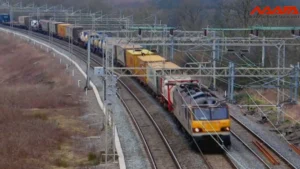
How Road Transport Shapes Urban and Rural Development
Table of Contents
How Road Transport Shapes Urban and Rural Development
Road transport has a significant impact on goods movement in cities because it provides a critical infrastructural network for the efficient transfer of commodities between suppliers, enterprises, and consumers. Efficient road systems promote timely delivery, assist supply chains, and enable last-mile logistics, thereby increasing company competitiveness. Furthermore, developments in road transport technologies promote sustainability and efficiency. Overall, road transportation is critical to fostering economic activity and serving the needs of urban enterprises and consumers.
Effects of Road Transport In Rural Areas
Transportation development is important for rural development in a variety of ways. Improved transportation infrastructure in rural areas can lead to better access to markets, healthcare, education, and other critical services. It can also expedite the movement of commodities and people, resulting in economic expansion and better living conditions. Better transportation connectivity can also attract investment, increase tourism, and reduce isolation, all of which help to improve rural towns.
Road Transport Helping In Agriculture
When it comes to agricultural produce transportation, it is obvious that transportation costs play an important role in determining the relationship between accessibility and agricultural development.
An efficient road transportation system is required for effective agricultural distribution. Road transport is vital in agricultural product distribution since it is the principal route of transportation from farms to markets and different urban neighborhoods. It is the only way food produced on a farm can be distributed to various homes and marketplaces. Road Transport generates a market for agricultural products, facilitates communication across geographical and economic regions, and broadens the economic focus to other areas.
Ecomical Growth in Rural Areas
Access to transportation can have a significant impact on economic growth in remote areas by allowing inhabitants and businesses to better access markets, jobs, and other possibilities. Adequate transportation infrastructure can connect rural communities to bigger urban centers, facilitating increased trade and business. This has the potential to boost business and industry growth while also creating jobs.
Furthermore, transportation can help people get to healthcare, education, and other social services more easily. Poor transportation infrastructure, on the other hand, can lead to isolation and a lack of economic prospects, exacerbating poverty and underdevelopment.
You May Also Like Reading: The Impact of Road Transport on Developing Economies
Effects on Education System in Rural Areas
Improvements to transportation infrastructure, such as road rehabilitation and development, benefit rural schooling. They lower the expenses, time, and distances associated with school travel, resulting in greater attendance, completion of studies, and enrollment in remote locations. The development of transportation infrastructure has a considerable positive link with family educational expectations. It increases family income, changes family reproduction views and educational notions, and boosts the family’s willingness to enroll their children in higher education.
Effects on Medical Services in Rural Areas
Road mobility has a significant impact on rural health systems by impacting access to healthcare facilities and services. Efficient road networks make it easier for patients to get to healthcare facilities, resulting in more timely access to care. Furthermore, the quality of rural roads influences the cost of delivering medical supplies and staff, which can have an impact on how the health system functions as a whole.
Furthermore, the state of remote roads might affect emergency services’ capacity to reach patients quickly, thereby influencing health outcomes. As a result, investing in and maintaining a well-developed road transport infrastructure in rural areas is critical for improving the health system’s effectiveness and efficiency, ultimately leading to better health outcomes for rural communities.
Future Effects
Road mobility has a huge impact on rural living conditions. Poor road infrastructure impedes agricultural development, resulting in low production and food insecurity. Neglect and inefficiency in rural road transport infrastructure impede economic and social development, thereby impacting population comfort, company activities, and investor attractiveness.

Effects of Road Transport In Urban Areas
Road transport has a substantial impact on urban development since it allows for the transfer of huge loads during construction, improves road network connectivity, and contributes to urban growth. The shift to private motorization has an influence on cities worldwide, increasing commuting distances, congestion, and pollution, needing a balance between motorization and sustainable urban development.
Mega transportation projects can fracture landscapes, harming wildlife and urban planning, but city-region transportation planning can intensify land use and encourage pedestrianization, albeit with obstacles such as land expropriation. Road traffic studies are critical for urban real estate development, as they analyze traffic patterns, capacities, and greenhouse gas emissions, particularly when designing structures that attract more automobiles to metropolitan areas. Overall, road transport shapes urban environments and influences growth trajectories.
Transportation Infrastructure
Road transportation infrastructure is extremely important for urban development. The growth of cities is inextricably related to the development of transportation infrastructure, which play an important role in facilitating urbanization. To achieve high-quality urban development, transportation infrastructure must be prioritized alongside environmental preservation, particularly in larger cities where transportation infrastructure has a greater impact on urban green development efficiency. Overall, a well-designed transport network hierarchy, public transportation infrastructure, and encouragement of active travel modes are critical for long-term urban mobility and livability.
Health Effects
Road transport has a significant impact on urban health systems, influencing a variety of health variables. The impact of transportation on urban health is diverse, with both positive and negative consequences. Positive consequences include increased physical exercise through walking and cycling, whereas negative aspects include air pollution, traffic injuries, and sedentary lives.
Transitioning to eco-friendly modes of transportation, such as bicycles, improving accessibility to destinations, regulating car demand, and building pedestrian and cyclist-friendly transport networks are all strategies for improving urban health. Addressing these issues is critical for building better urban settings and minimizing the negative health consequences of road transport.
Economic Development
Road transport has a significant impact on urban economic systems by improving accessibility and connectivity, facilitating the efficient movement of goods and people, fostering employment opportunities both directly and indirectly, influencing real estate development and urban planning decisions, supporting tourism and commerce, driving innovation and technology adoption, and promoting social equity through improved access to essential services and opportunities. Efficient road networks are critical for long-term urban development, economic growth, and improving the overall quality of life in cities.
Education Upliftment
Road transportation has a significant impact on the urban education system by facilitating access to educational institutions, allowing for student and teacher transportation, supporting extracurricular activities and school events, and influencing the location of schools and educational facilities. Efficient road networks guarantee that pupils may easily commute to school, lowering barriers to education and increasing attendance rates.
Furthermore, transportation infrastructure is critical in school bus services, enabling children from varied neighborhoods to reach educational opportunities. The provision of transportation allows students to participate in extracurricular activities, field trips, and educational events, which enriches their learning experiences. Furthermore, schools and educational institutions are frequently located near major highways to ensure student and staff accessibility.
Goods Movement
Road transport has a significant impact on the flow of commodities in metropolitan areas since it serves as a crucial infrastructural network for transporting items between suppliers, enterprises, and consumers. Efficient transportation systems provide for fast and reliable delivery of goods, which helps supply chains and businesses run smoothly. In metropolitan settings, road transit enables last-mile delivery, ensuring that items get at their final destinations effectively. The availability of well-maintained roads and highways impacts logistics operations, lowering transportation costs and increasing corporate competitiveness.
Furthermore, developments in road transport technologies, such as GPS tracking, route optimization software, and electric delivery trucks, are influencing the future of urban goods transportation by boosting sustainability and efficiency. Overall, road transport has a significant impact on the flow of commodities in metropolitan areas, promoting economic activity and serving the needs of businesses and consumers.

Conclusion
Road transport has a wide-ranging impact on rural development. Improved transportation infrastructure promotes greater access to key services such as healthcare and education, hence boosting economic growth and raising living standards. Furthermore, effective road networks improve agricultural distribution, encourage corporate expansion, and strengthen the education system, resulting in more chances for development.
Thanks For Reading: How Road Transport Shapes Urban and Rural Development
Powered By 360Presence






